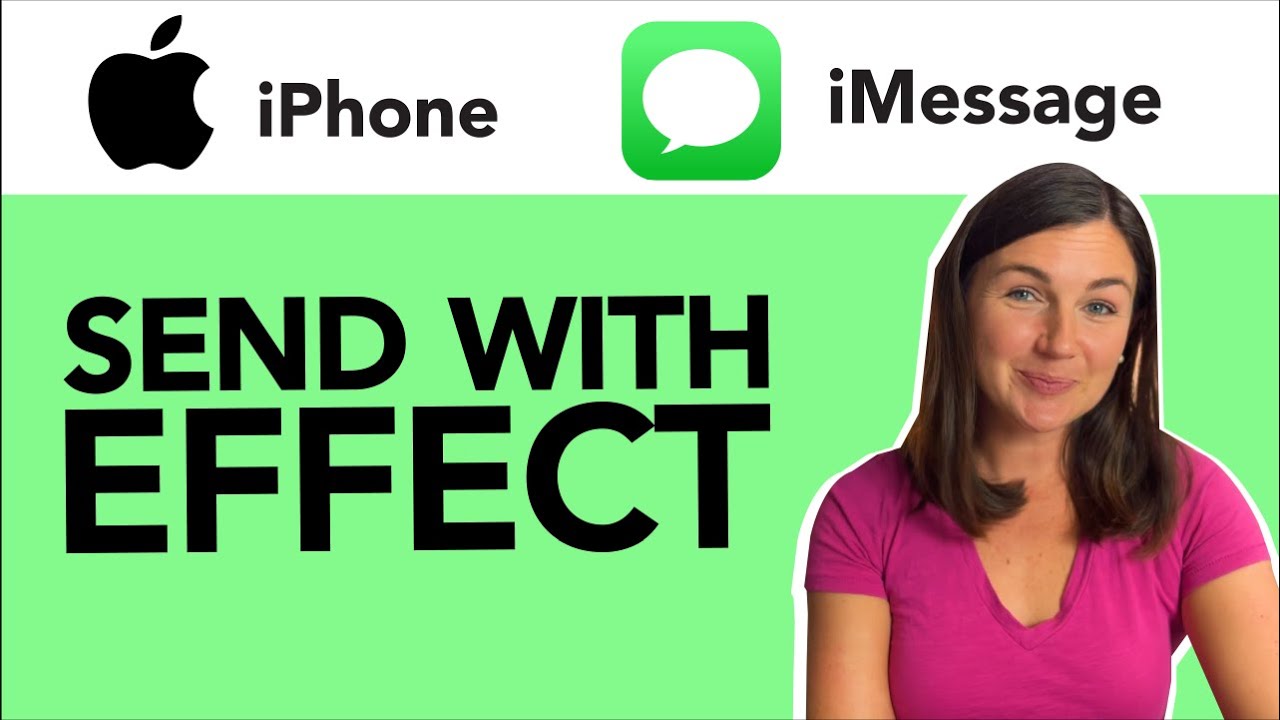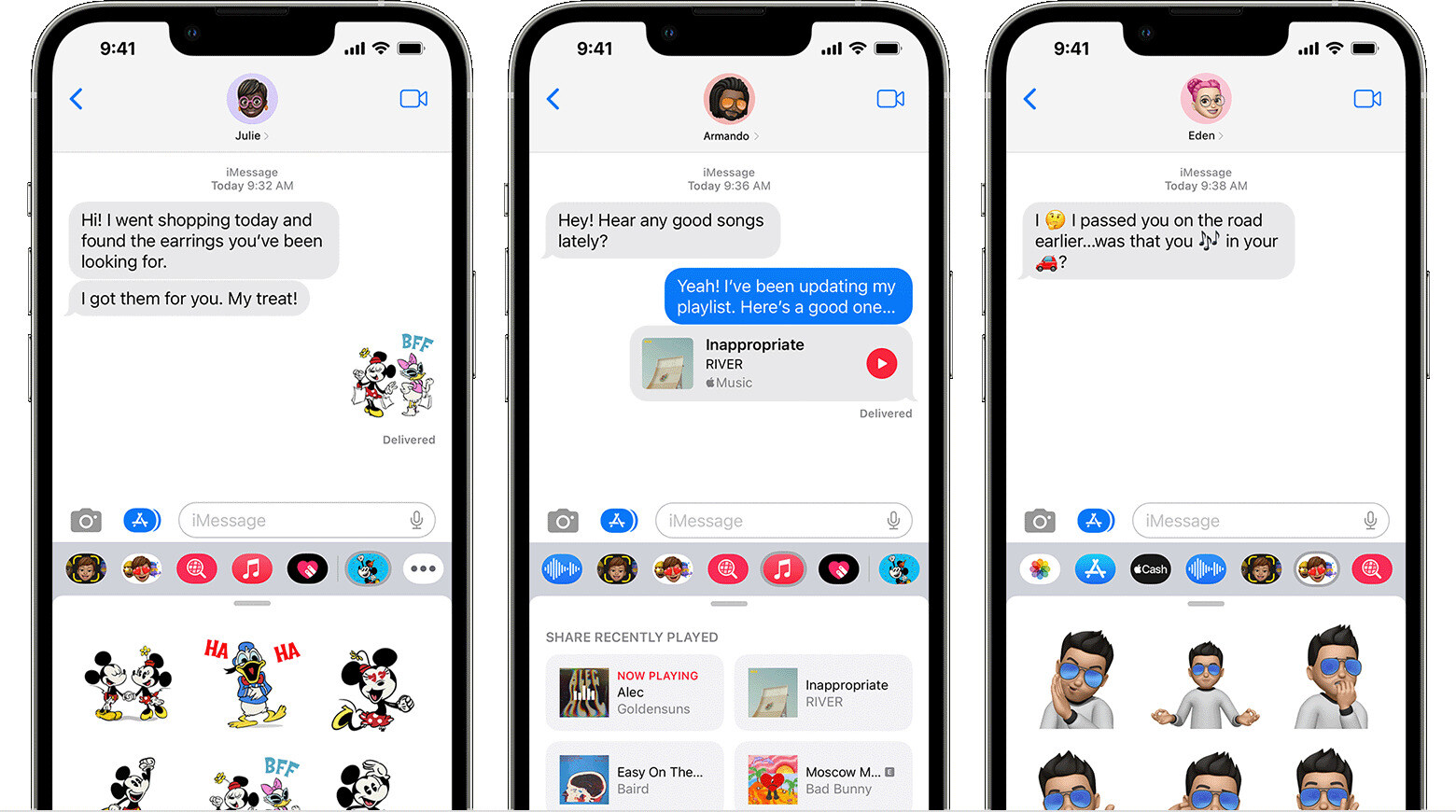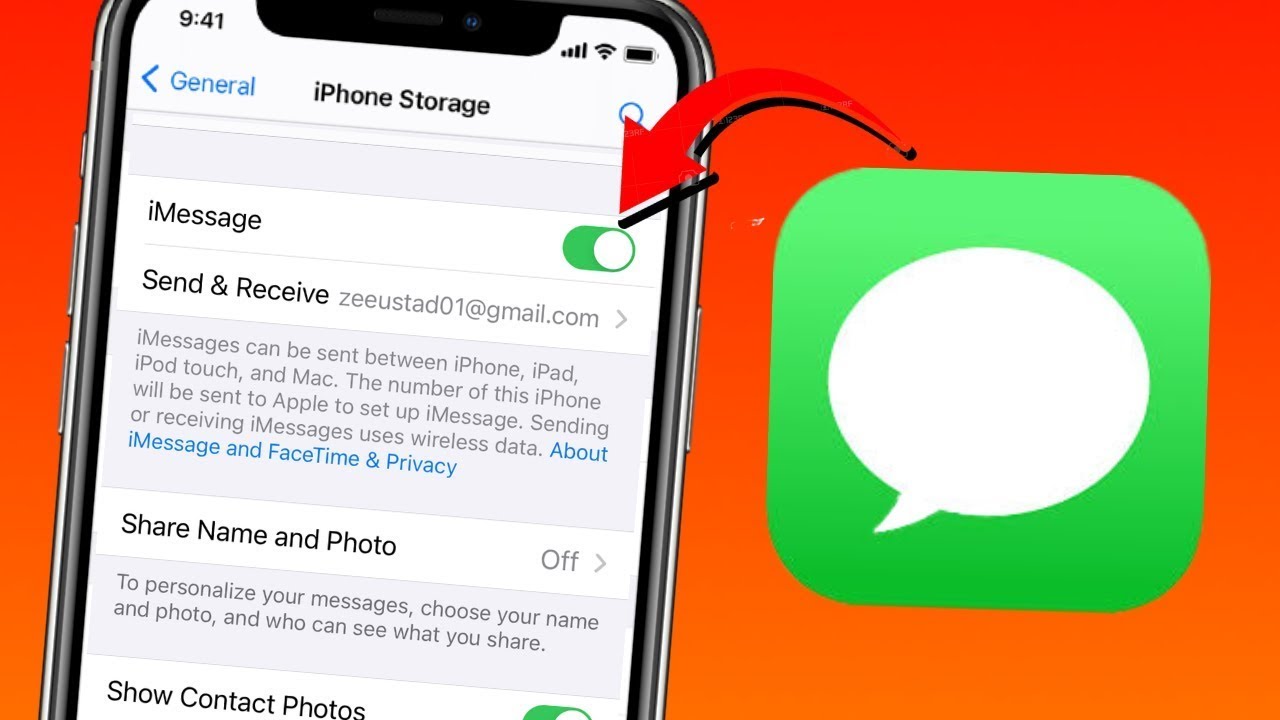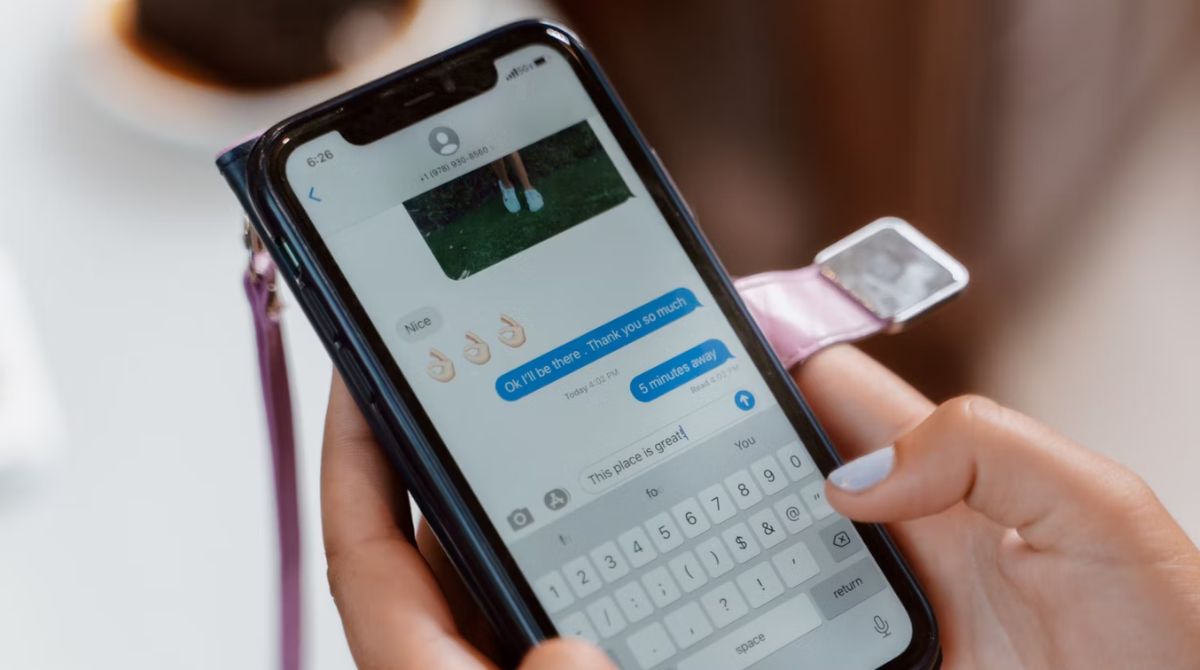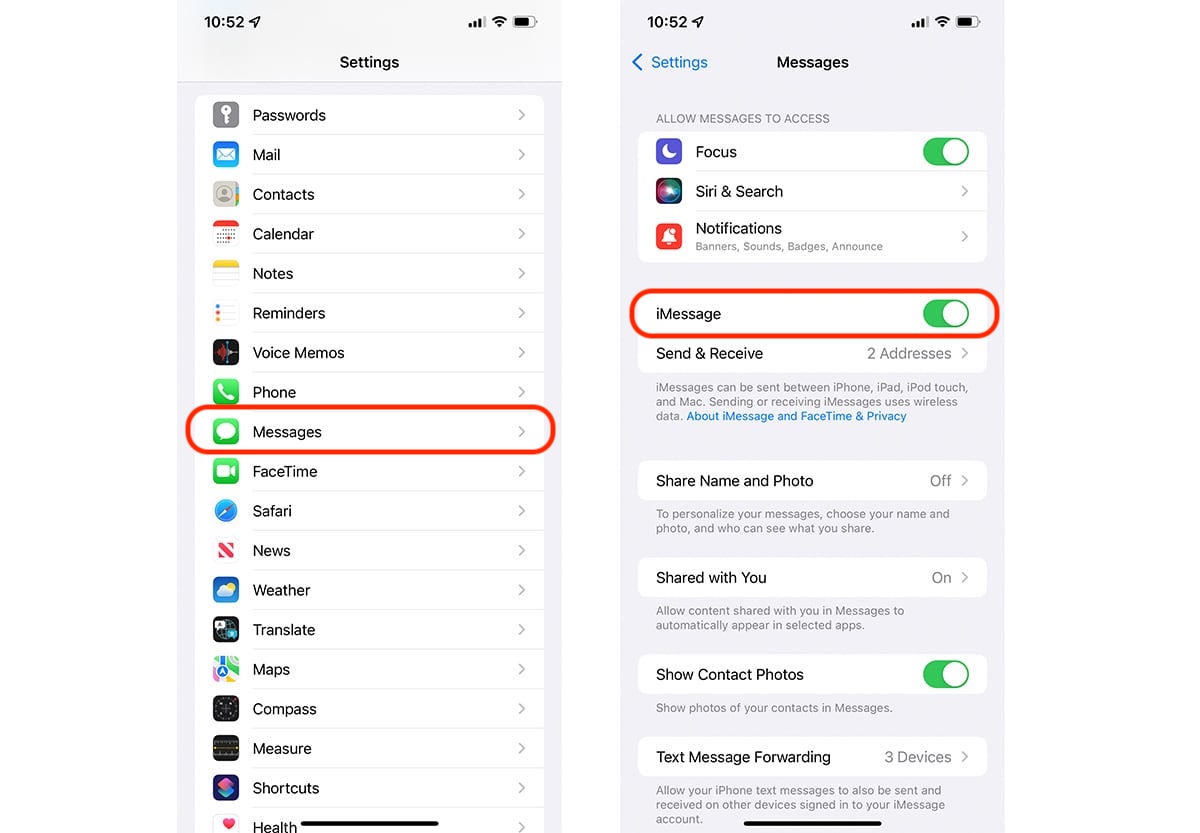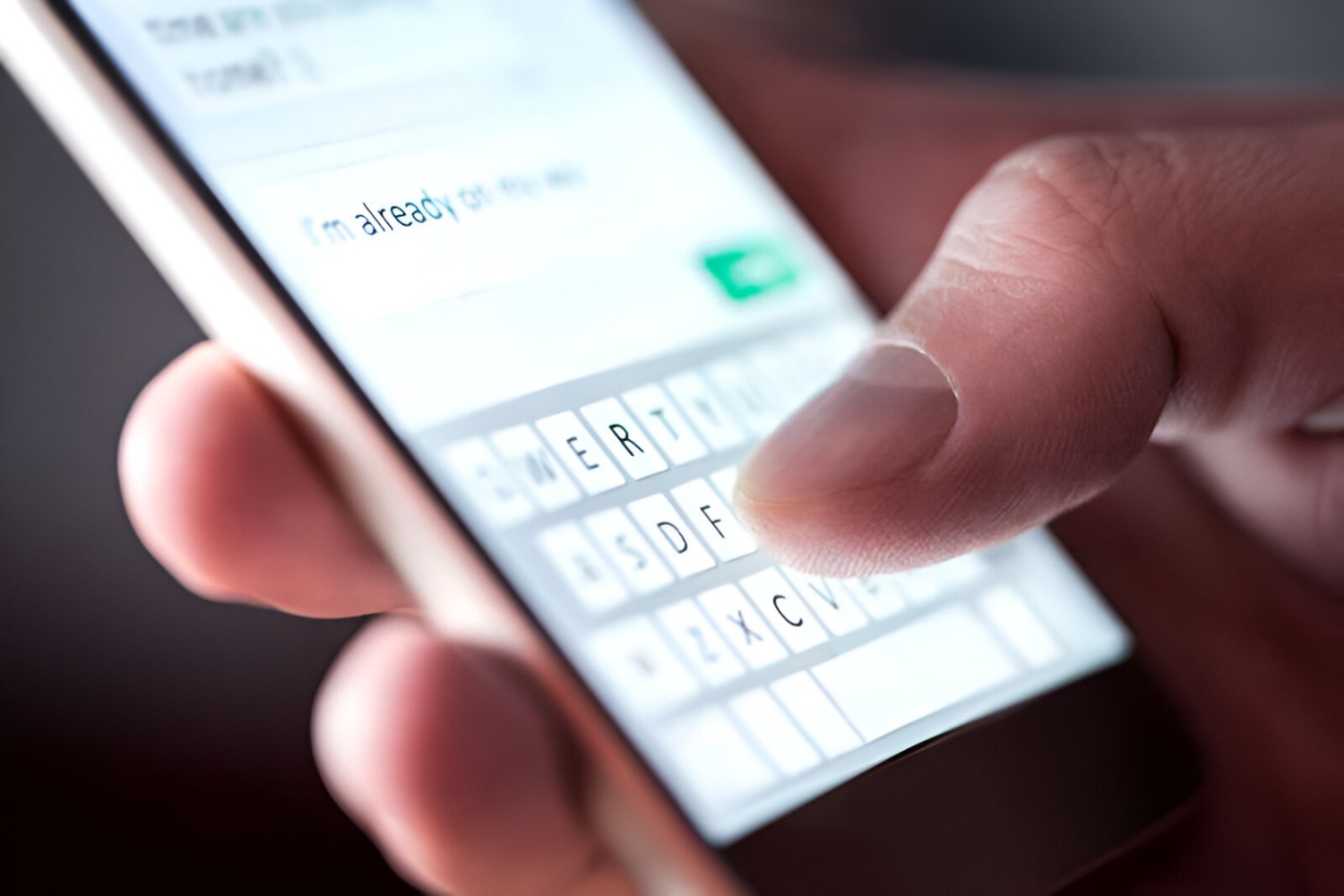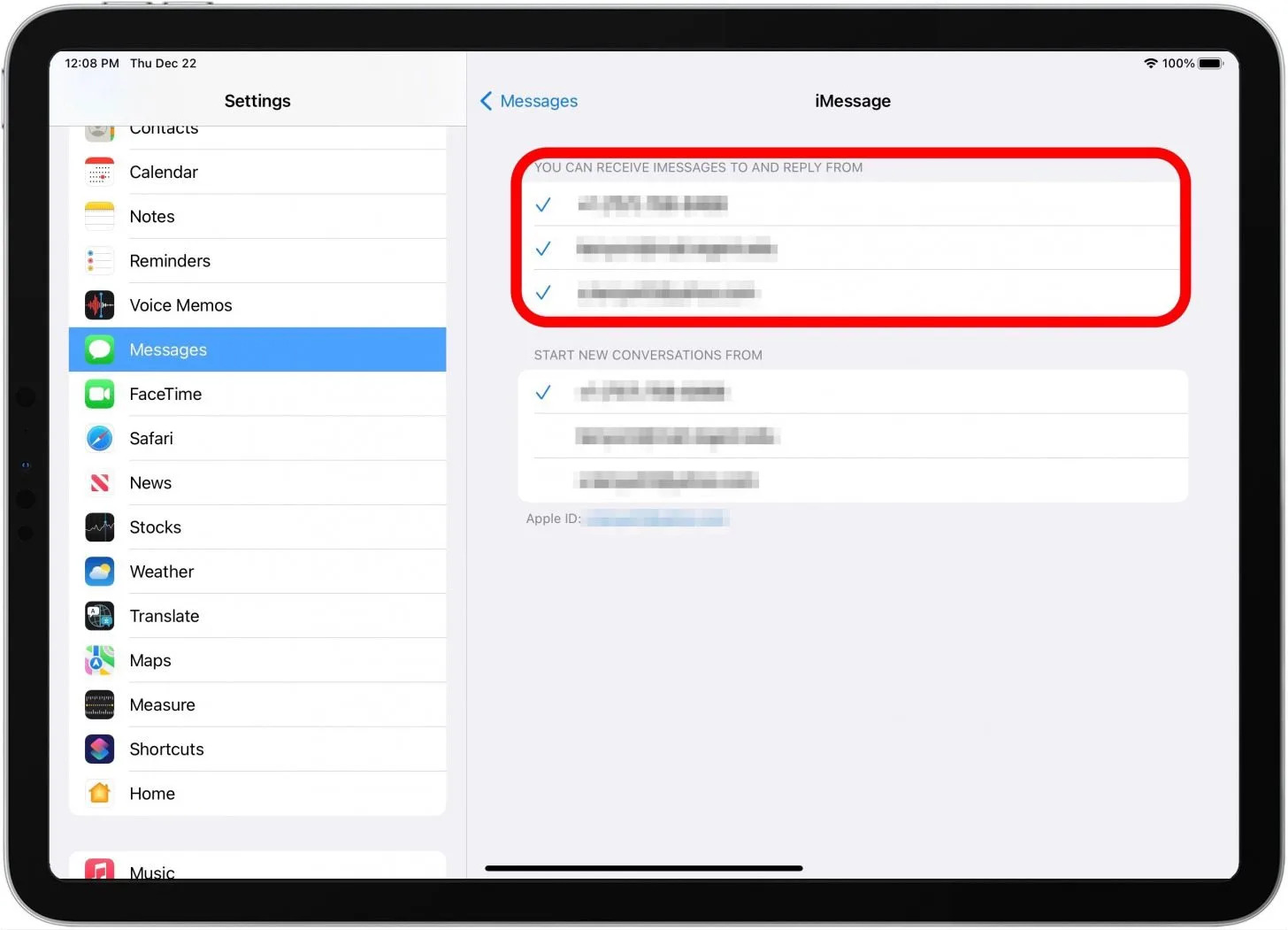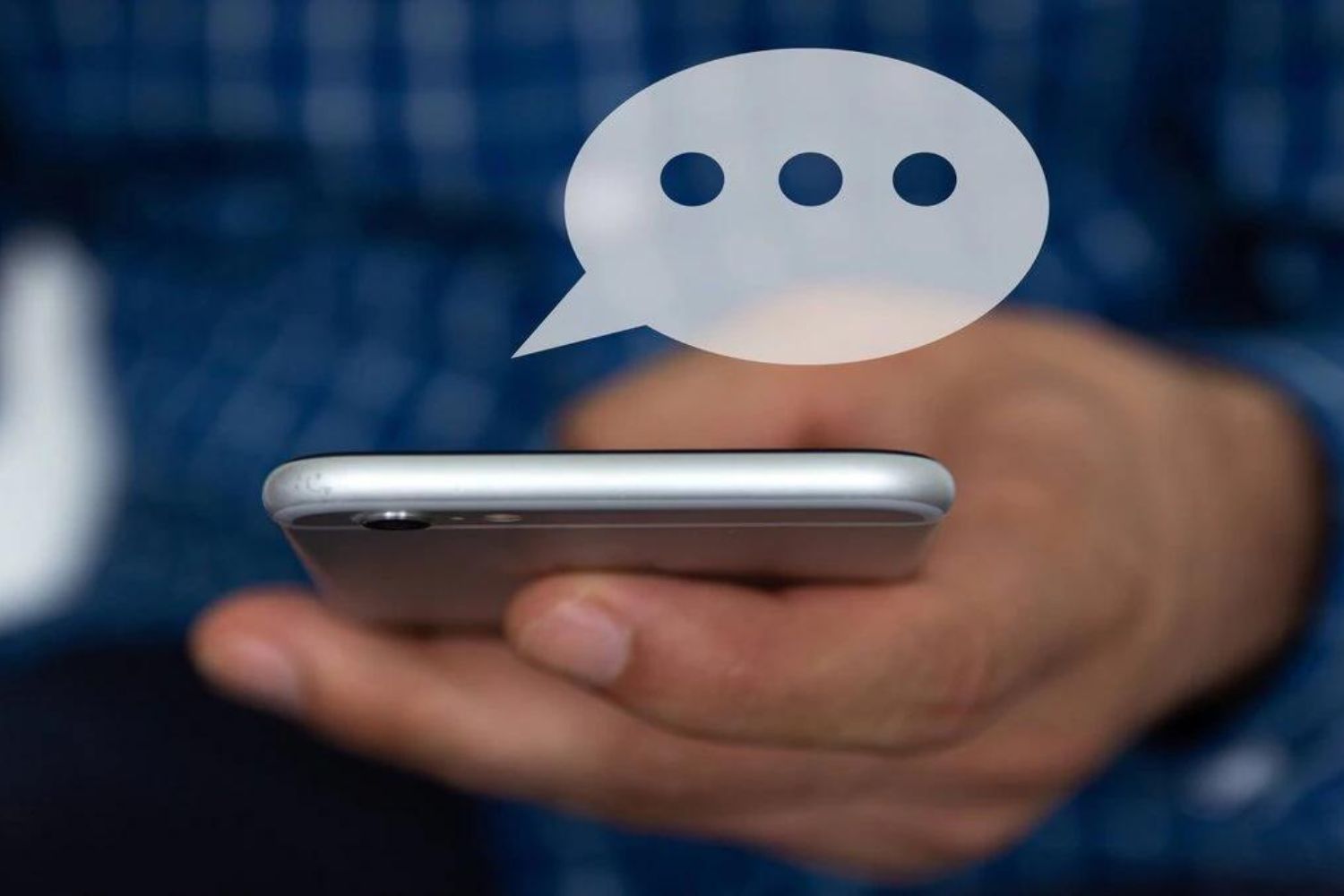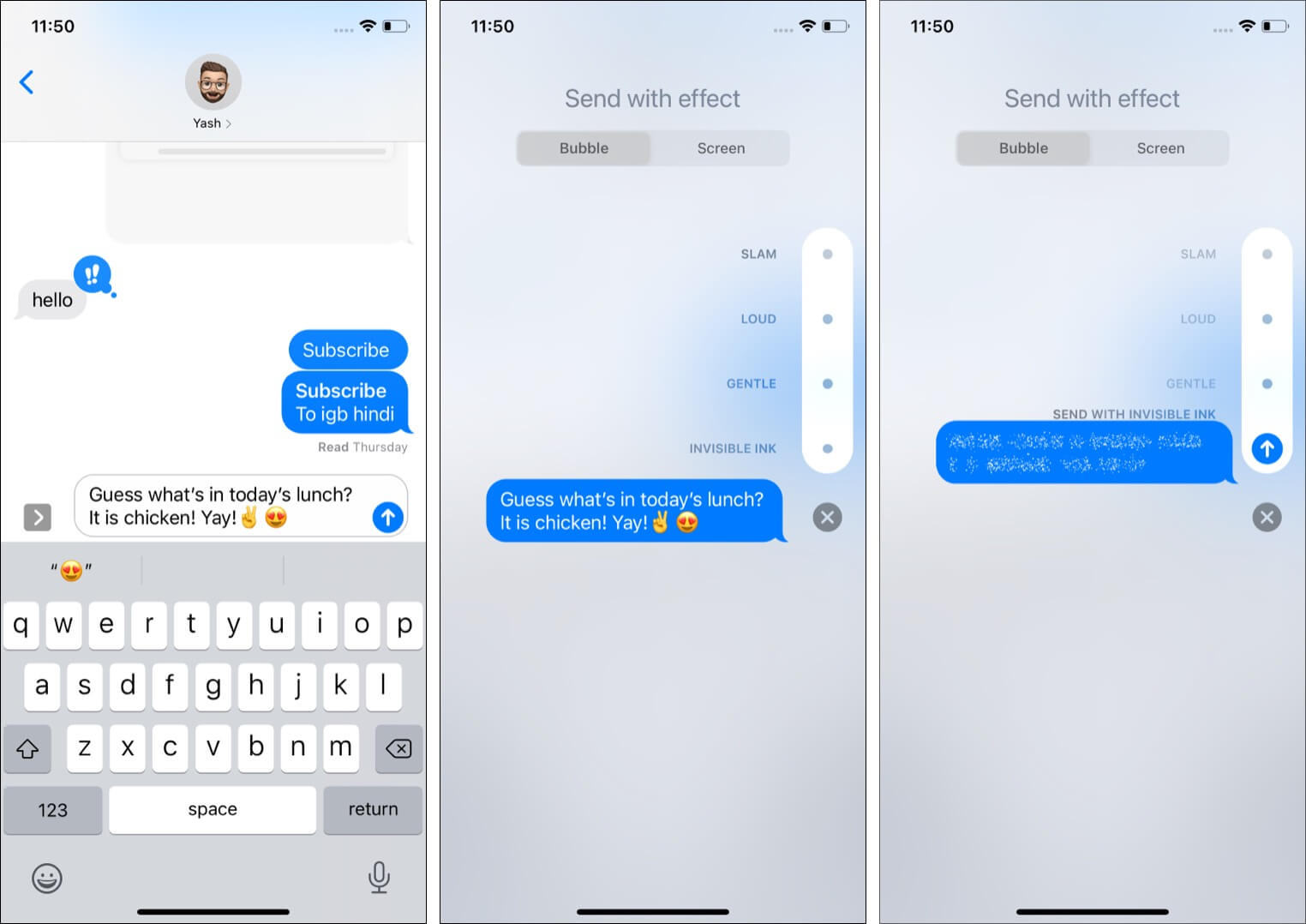Introduction
With the rise of smartphones and messaging apps, staying connected with friends and loved ones has become easier than ever. Apple’s iMessage is a popular messaging platform that allows users to send text messages, photos, videos, and more to other Apple device users. But did you know that iMessage also offers a fun and interactive way to communicate? By using iMessage effects, you can add an extra level of excitement and creativity to your messages.
In this article, we will explore the various iMessage effects and learn how to send messages with these effects on your iPhone or iPad. Whether you want to emphasize a point, celebrate an achievement, or simply express your emotions in a fun way, iMessage effects can help you add that special touch to your conversations.
So, if you’re ready to take your messaging game to the next level, let’s dive in and discover how to use iMessage effects on your Apple devices.
What are iMessage effects?
iMessage effects are a set of features available on Apple devices that allow users to enhance their text messages with special visual and audio effects. These effects can add a touch of flair and excitement to your conversations, making them more engaging and memorable.
There are several types of iMessage effects that you can choose from, including:
- Bubble effects: These effects change the way your text bubbles appear on the recipient’s screen. For example, the “Slam” effect makes your message appear as if it’s slamming onto the screen, while the “Gentle” effect makes it appear softly.
- Screen effects: These effects modify the entire screen of the recipient’s device. For instance, the “Confetti” effect covers the screen in celebratory confetti, while the “Fireworks” effect displays beautiful fireworks in the background.
- Handwritten messages: This feature allows you to write and send a hand-drawn message. The recipient will see your message being written out in real-time, adding a personal and artistic touch to your conversation.
- Tapbacks: Tapbacks are quick and convenient ways to respond to a message without typing. You can react to a message with a thumbs-up, a heart, a question mark, and more, simply by tapping and holding on a message bubble.
These are just a few examples of the incredible range of iMessage effects that can elevate your conversations. By utilizing these effects, you can express yourself in a more unique and engaging way, making your messages stand out from the crowd.
If you’re wondering how to send iMessage with these effects, fret not! We’ll be covering that in the upcoming sections for both iPhone and iPad users. So, let’s get started and discover how to add some pizzazz to your messages!
Types of iMessage effects
iMessage offers a variety of effects that allow you to enhance your messages and make them more visually appealing. These effects can add a touch of excitement and emotion to your conversations. Let’s take a closer look at the different types of iMessage effects available:
- Bubble Effects: Bubble effects change the appearance of the speech bubbles in your messages. There are several options to choose from, including Slam, Loud, Gentle, and more. For example, the Slam effect makes your message bubble slam onto the screen for emphasis, while the Loud effect makes it appear larger and animated.
- Screen Effects: Screen effects are full-screen animations that appear behind your messages. These effects are a fantastic way to capture attention and convey emotions. Examples of screen effects include Balloons, Confetti, Fireworks, and more. The Balloons effect fills the screen with colorful balloons that float upwards, while the Fireworks effect displays a stunning fireworks display in the background.
- Handwritten Messages: With the handwritten messages feature, you can write a personalized message in your own handwriting. This effect allows you to add a personal touch to your conversations, giving them a more intimate and artistic feel. Your handwritten message appears stroke by stroke on the recipient’s screen, mimicking the act of writing by hand.
- Tapbacks: Tapbacks are a convenient way to respond to a message without typing a lengthy reply. You can quickly react to a message by tapping and holding on a message bubble and selecting a Tapback option. Some of the Tapback options include thumbs-up, thumbs-down, heart, laughter, and more. It’s a fun and expressive way to engage in conversations.
These are just a few examples of the iMessage effects you can use to enhance your messages. Each effect adds a unique visual or interactive element to your conversations, making them more dynamic and engaging. As we move forward, we will explore how to send messages with these effects on both the iPhone and iPad.
How to send iMessage with effect on iPhone
Sending messages with effects on your iPhone is a straightforward process that can be done directly from the iMessage app. Follow the steps below to add some excitement to your messages:
- Open the Messages app on your iPhone and start a new conversation or select an existing conversation.
- Type your message in the text field as you normally would.
- To access the effects menu, press and hold the send button (the upward-pointing arrow) next to the text field.
- In the effects menu, you will see two tabs at the top – Bubble and Screen. Swipe left or right to switch between these tabs and explore the available effects.
- Tap on the effect you want to use. For example, if you select the Slam effect under the Bubble tab, your text bubble will appear as if it’s slamming onto the screen.
- Optionally, you can preview the effect before sending it by tapping the gray play button.
- Once you’re satisfied with the effect, tap the blue send button to share your message with the chosen effect.
It’s important to note that both you and the recipient need to have an Apple device running iOS 10 or later to fully experience the iMessage effects. If the recipient is using a non-Apple device or an older version of iOS, they may only receive a standard text message without the added effects.
Now that you know how to send messages with effects on your iPhone, let’s move on to discovering how to do the same on an iPad.
How to send iMessage with effect on iPad
Using iMessage effects on your iPad is similar to the process on an iPhone and can be done right from the Messages app. If you’re using an iPad and want to send messages with effects, follow the steps below:
- Launch the Messages app on your iPad and open a conversation or start a new one.
- Type out your message in the message field just like you would with a regular text message.
- To access the effects menu, locate the arrow button (send button) on the right side of the message field. Press and hold on the arrow button to bring up the effects menu.
- In the effects menu, you will find two tabs at the top – Bubble and Screen. Swipe left or right to switch between these tabs and explore the available effects.
- Select the desired effect by tapping on it. For instance, if you choose the Loud effect under the Bubble tab, your message will appear larger and animated on the recipient’s screen.
- If you want to preview the effect before sending it, tap the gray play button.
- Once you’re satisfied with the effect, tap the send button to deliver your message with the chosen effect to your conversation partner.
Remember that for the iMessage effects to work seamlessly, both you and the recipient need to have Apple devices running iOS 10 or later. If the person you’re messaging doesn’t have an Apple device or is using an older version of iOS, the effects may not be visible to them.
Now that you’re familiar with sending iMessage effects on your iPad, let’s move on to some important tips to make the most out of using these effects.
Important tips for using iMessage effects
While iMessage effects can be a fun and creative way to enhance your messages, there are a few important tips to keep in mind to ensure a smooth and enjoyable experience:
- Use effects sparingly: While effects can add excitement to your messages, it’s essential to use them appropriately. Overusing effects may distract from the actual content of your message. Reserve them for special occasions or when you want to emphasize a particular point.
- Consider the recipient: Before sending an iMessage with an effect, consider the preferences and device capabilities of the person you’re messaging. If they have a slower or older device, certain effects may not display correctly or may cause performance issues. Use effects that you know will be compatible with their device.
- Try out different effects: Explore the available effects and experiment with different combinations to find the ones that best suit your style and the message you want to convey. Don’t be afraid to get creative and have fun with it.
- Preview before sending: Take advantage of the preview feature to see how the effect will appear before sending it. This allows you to make any necessary adjustments or choose a different effect if it doesn’t look as expected.
- Ensure a compatible version: Make sure that both you and the recipient have a compatible version of iOS on your devices to fully enjoy the iMessage effects. If one of you has an older version, some effects may not be available or may not work as intended.
- Be mindful of accessibility: Keep in mind that some users may have visual or hearing impairments. When using effects like screen effects or tapbacks, ensure that the message content is still accessible and understandable without relying solely on the effects.
By following these tips, you can make the most out of using iMessage effects and create engaging and enjoyable conversations with your friends and loved ones.
Troubleshooting common issues
While using iMessage effects can be a fun and seamless experience, there may be instances where you encounter certain issues. Here are some common problems you may encounter when using iMessage effects and how to troubleshoot them:
- Effects not working: If you’re unable to see or use iMessage effects, first make sure that you and the recipient have compatible devices and the latest version of iOS. Restarting your device or updating to the latest iOS version can often resolve this issue.
- Effects not appearing: If you’re sending iMessage effects, but the recipient is not seeing them, it could be due to their device settings. Ensure that they have enabled the option to receive iMessage effects in their device settings. Also, remind them to check for any iOS updates.
- Inconsistent effect display: If some effects appear differently or inconsistently on the recipient’s device, it may be caused by device compatibility or individual settings. Encourage both parties to update to the latest iOS version and make sure that they have enabled the appropriate settings for iMessage effects.
- Effect playback issues: Occasionally, an effect may not play as expected or may be distorted. Check your internet connection as a weak or unstable connection can affect the playback of the effects. If the issue persists, try sending the message with a different effect or restart your device.
- App freezing or crashing: If the Messages app freezes or crashes when using iMessage effects, there may be a temporary software glitch. Close the app and restart your device to resolve the issue. If the problem persists, consider updating to the latest iOS version or contacting Apple Support for assistance.
If none of these troubleshooting steps resolve the issue, it’s advisable to reach out to Apple Support for further assistance. They can provide specific guidance for your device and help resolve any persistent issues related to iMessage effects.
Now that you’re equipped with troubleshooting tips, let’s conclude our discussion on using iMessage effects.
Conclusion
iMessage effects offer a fun and interactive way to enhance your messages and make them more memorable. Whether you want to emphasize a point, celebrate an occasion, or simply add a touch of creativity to your conversations, using iMessage effects can make your messages stand out.
In this article, we explored the various types of iMessage effects available, including bubble effects, screen effects, handwritten messages, and tapbacks. We learned how to send messages with effects on both iPhones and iPads, and we discovered some important tips for using these effects effectively.
However, it’s essential to use iMessage effects in moderation and consider the preferences and device capabilities of the recipient. It’s also important to ensure that both you and the recipient have compatible iOS versions for full effect compatibility.
If you encounter any issues with iMessage effects, remember to follow the troubleshooting steps outlined in this article, such as checking for updates, restarting your device, and verifying the settings.
Now that you’re equipped with the knowledge and techniques to use iMessage effects, go ahead and unleash your creativity! Add a splash of excitement and emotion to your messages and make your conversations more engaging and enjoyable.







